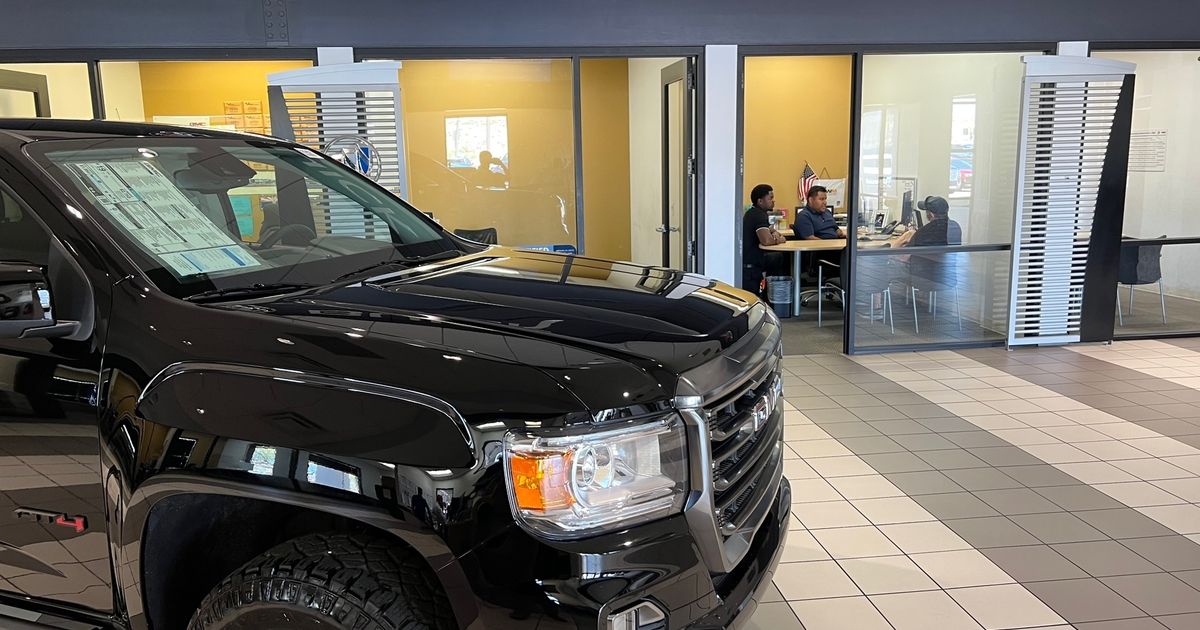
General Motors has enacted a new sales reporting policy that prohibits dealerships from selling a vehicle to a customer before it arrives at the store.
Low inventory levels driven by various parts shortages and logistics challenges created issues related to preselling a vehicle after a dealer was invoiced but before the customer received it.
GM’s Q2 U.S. sales slipped 15 percent. For full coverage, click here.
As of Friday, July 1, GM no longer allows dealers to report a vehicle as sold before a customer takes possession of it, according to a memo from the automaker to dealers obtained by Automotive News. That’s because reporting a vehicle as sold triggers the start of financing payments, warranties and trials of OnStar, Sirius XM and other services — potentially months before the vehicle actually reaches the customer.
State laws vary on when a dealer can sell a vehicle to a customer, and GM’s policy affects dealers in states that allow a sale to occur before delivery.
As the global microchip shortage and other supply chain challenges slow delivery timelines, GM said it changed the sales reporting policy to enhance customer experience. Dealers who spoke with Automotive News on condition of anonymity largely supported the adjustment.
“They’re trying to save the dealers from themselves … and from their shipping woes that they’ve got going on,” a Chevrolet dealer from Minnesota said.
GM spokesman Sabin Blake confirmed the policy change and said the automaker has rolled out a variety of programs to protect customer pricing during the parts shortage. Such programs guarantee the agreed-upon terms of a sale before a vehicle is delivered and ensure that the incentives customers qualify for when they order or reserve a vehicle remain intact when they take delivery.
GM on Friday said it would hold about 95,000 vehicles awaiting parts until they are completed. The automaker expects the vehicles to be delivered to dealers by the end of this year and will recognize the revenue when the vehicles are sold to dealers.
“We appreciate the patience and loyalty of our dealers and customers as we strive to meet significant pent-up demand for our products, and we will work with our suppliers and manufacturing and logistics teams to deliver all the units held at our plants as quickly as possible,” Steve Carlisle, president of GM North America, said in a statement Friday as GM reported a second-quarter sales decline of 15 percent.
Industrywide, dealers and automakers continue to cope with scarce inventory. Retail inventory, which includes vehicles on dealership lots and vehicles in transit, has hovered around 850,000 for three months, said Tyson Jominy, vice president of data and analytics at J.D. Power. That compares with more than 3 million under normal circumstances in recent years.
The chip shortage is only one of many factors making it hard for dealers and customers to get the vehicles they want, Jominy said.
“It’s everything. It’s paint resin. It’s tires. It’s wiring harnesses. It’s headlights. It’s radios,” he said. “If it was one thing, we could probably have a solution. But the reality is it’s multilayered supply and logistical challenges that make it extraordinarily difficult to resolve quickly.”
Dealers often are invoiced for vehicles before they leave the assembly plant. In some states, they can officially sell a vehicle to a customer as soon as they receive its invoice and certificate of origin. Before the pandemic, dealers could be confident that the vehicle would arrive a week or two after being invoiced.
The crisis has left dealers unable to answer many customers’ questions about when their vehicles will show up.
“Sometimes you get [the vehicles] in three months, and sometimes you get them in seven,” the Minnesota Chevy dealer said. “You report them, and by the time the thing comes in, you have made three payments on it, all the trials for OnStar and XM are expired and the [customer] calls you 9,000 times wondering where his vehicle is.”
Until now, when a Cadillac, Chevy, Buick and GMC dealer reported a vehicle as sold often depended on what the law in their state allowed. Dealerships that prereported vehicles as sold would show a higher turn rate than those that reported sales only upon delivery.
GM’s new policy “puts all dealers on the same playbook,” a Texas dealer said. “So everyone’s turn rates will be reflective of their actual inventory.”
During a brief period when the Texas dealer was reporting sales prior to delivery, the store received an “ungodly” number of customer complaints, the dealer said. Banning such reporting for all GM dealers is “the right call because it’s the right thing for the customers.”